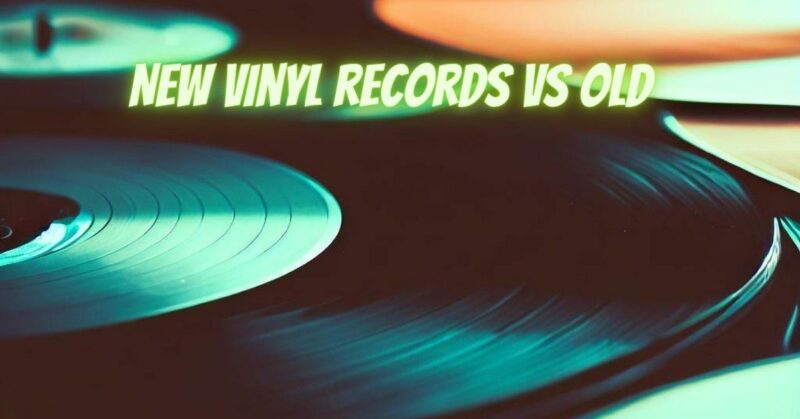Vinyl records, with their warm analog sound and nostalgic charm, have maintained a steadfast presence in the music industry. As the vinyl revival continues, enthusiasts are faced with a choice between new pressings and vintage records. In this comparative exploration, we’ll delve into the characteristics of new vinyl records and old ones, highlighting the nuances that make each a unique sonic experience.
- Vinyl Quality and Production Techniques:
New Vinyl Records: Advancements in vinyl production technology have allowed for higher precision and consistency in new vinyl records. Modern pressings often benefit from improved quality control, resulting in lower surface noise, reduced pops, and a more reliable listening experience. Additionally, new vinyl is less prone to issues like warping, ensuring that records arrive in pristine condition.
Old Vinyl Records: Vintage vinyl records, on the other hand, may exhibit signs of wear and tear over the years. Scratches, surface noise, and groove wear are common characteristics of older records, especially those that have seen heavy use. However, some audiophiles argue that the analog warmth and character of vintage vinyl can offer a unique sonic charm that newer pressings may not replicate.
- Mastering Techniques:
New Vinyl Records: Contemporary mastering techniques benefit from advancements in technology, allowing for greater precision and control. New vinyl releases often undergo meticulous mastering processes that cater to the capabilities of modern playback equipment. This can result in cleaner sound, enhanced dynamics, and improved clarity, making new vinyl a favorable choice for audiophiles seeking pristine audio quality.
Old Vinyl Records: Vintage vinyl may showcase the mastering styles of its era, which could include warmer tones, different equalization choices, or unique sonic characteristics inherent to the original mastering process. Some collectors appreciate the historical authenticity of vintage mastering, finding that it adds a distinctive flavor to the listening experience.
- Availability and Rarity:
New Vinyl Records: The resurgence of vinyl has led to a surge in new releases across various genres. Popular and contemporary albums are widely available in new vinyl format, catering to a diverse range of musical tastes. Limited edition releases and colored vinyl variants also contribute to the appeal of new pressings.
Old Vinyl Records: Collectors and enthusiasts often seek out vintage vinyl for its historical significance and potential rarity. Certain albums or pressings may become sought-after treasures, contributing to the allure of building a collection that spans different eras. However, acquiring specific vintage records can be challenging, and their condition can vary significantly.
- Album Artwork and Packaging:
New Vinyl Records: Advancements in printing and packaging technology have allowed for stunning reproductions of album artwork on new vinyl releases. High-quality materials and attention to detail contribute to an aesthetically pleasing and durable product. Additionally, some new vinyl releases feature bonus content, lyric inserts, or other collectibles.
Old Vinyl Records: Vintage vinyl often carries the authentic charm of original album artwork and packaging. Collectors appreciate the nostalgia associated with classic record sleeves, gatefolds, and unique cover designs. However, the condition of these elements may vary, and older records might not have the same durability as their modern counterparts.
- Price Considerations:
New Vinyl Records: In general, new vinyl records are more widely available and, as a result, can be more affordable than rare or sought-after vintage releases. Standard new pressings of popular albums are usually reasonably priced, making vinyl accessible to a broader audience.
Old Vinyl Records: The price of vintage vinyl records can vary significantly based on factors such as rarity, condition, and demand. Collectors seeking specific editions or well-preserved copies of iconic albums may find themselves investing more in their vinyl acquisitions.
The choice between new and old vinyl records ultimately depends on individual preferences, collecting goals, and the desired listening experience. New vinyl offers consistency, durability, and access to a wide range of contemporary releases. On the other hand, vintage vinyl provides a nostalgic journey through time, often accompanied by the character of well-loved albums and the allure of historical authenticity. Whether you’re a seasoned audiophile or a newcomer to the vinyl world, both new and old records contribute to the rich tapestry of the vinyl experience, inviting listeners to explore the sonic nuances and cultural legacy of this enduring format.


